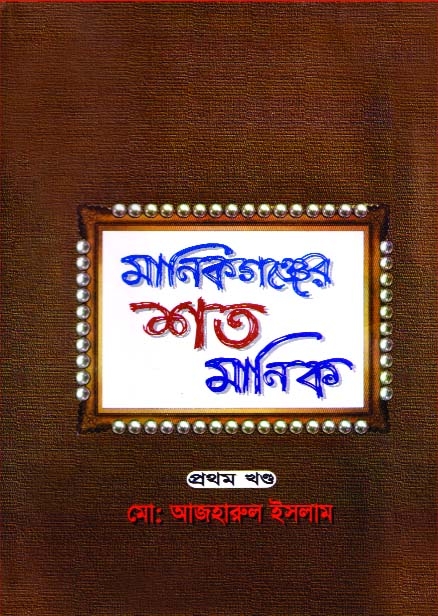
Syed Tosharaf Ali :
Mohammad Azharul Islam has done a wonderful work highlighting his district Manikganj as birth place of hundreds of distinguished personalities, those who played a vital role in building the glorious history of the district. Some are famous both at home and abroad for their outstanding contribution in the field of art, culture and literature. Azharul Islam in his book titled ‘Manikganjer Shato Manik’ has included short-biography of eminent personalities and history of renowned families of Manikganj which is the part of our national history.
Readers of this who do not belong to Manikganj will get information about the geographical location, historical back ground and cultural specialty of the district. Readers will get the names of those who served as SDOs and DCs of Manikganj. More over the Map of the district printed in the book will locate the positions of the upazillas and unions of the district. Knowledge of geography, history, sociology and other important facts will be increased if any one goes through the book. The books (vol. I & II) were a huge task for Azharul Islam. He has spent enough time and shown extreme perseverance and passion to collect and compile the biography of five hundred persons who have enriched the heritage of Manikganj. Some of them have migrated to India. We were under British rule for about 200 years, but did not follow them in maintaining our own historical records. They are maintaining records of every person and every place. But we neglect history, geography and many other things. For this reason, we cannot follow the foot print of our forefathers.
Before going through this book I did not know that Mr Zulfiker Khan from Manikganj was involved with the establishment of Fort William College on the 4th May, 1800. His son Adalat Khan was famous for teaching English speaking people. From Adalat Khan to Amartya Sen and singer Aditi Mohasin is a long history. Sons of the soil of Manikganj are playing an important role in the expansion of human history.
Manikganj was a Sub-Division under Dhaka district until 1984. When Manikganj was given the status of Sub-Division in 1945, it was under Faridpur district. Like administrative change; the nature, geography, demography and culture also have been changed with passage of time. After the establishment of Muslim rule in Bengal in 1205, the Muslim population started to increase rapidly Manikganj and the Muslims found their position stronger. Now the Buddhist, the Hindus and the Muslims are living in harmony in Manikganj like other areas of Bangladesh.
We are lucky for our multidimensional religious and cultural heritage. There are some rare photos in this book as to who were heroes. Mr Azharul Islam has done a great job. If others come forward to present their own district in this way, then our national history will be enriched and new generation will get inspiration from their past.
I am happy to know that Justice Habibur Rahman Khan, Prof. Dr Rowshanara Begum, S.M. Abdul Mannan, Begum Samsuj Zahan Nur and Prof Mahfuza Khanam extended their helping hands in various ways in this great endeavor. Let the book win the hearts of the readers.

